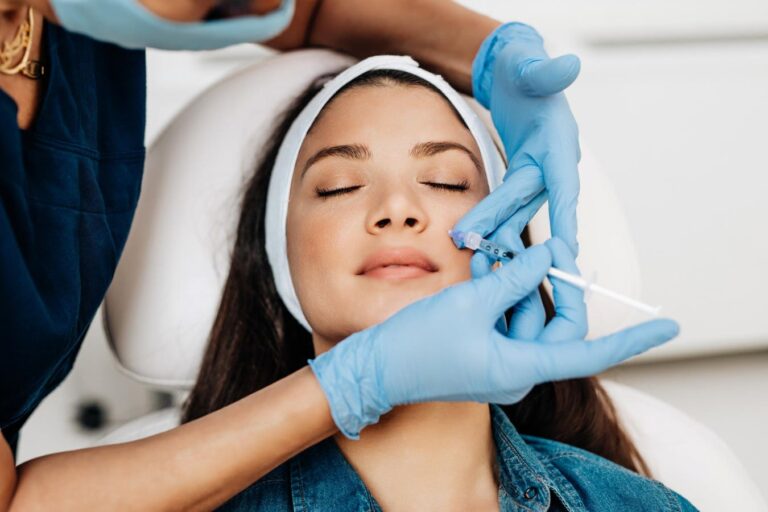Business to stay young is rapidly growing
Whether it's middle-aged men and women trying to stay young, or younger generations trying to emulate social media filters in real life, these consumer behaviors are driving the beauty industry.
The quest for eternal youth is as old as human civilization, with countless myths, stories, and quests revolving around the elusive Fountain of Youth. However, unlike the alchemical pursuits of the past, today's anti-aging movement is based on a rigorous field of science and technology. According to Statista, the global anti-aging market was $62 billion in 2021 and is expected to increase to approximately $93 billion by 2027.
The business of staying young is experiencing unprecedented growth. This fast-growing field is driven by a combination of technological advancements, cultural changes, and an aging global population, leading to an increased appetite for investing in products and services that promise to slow the signs of aging and improve appearance. It is being promoted.
Treatments using toxins such as Botox and fillers increased by 41% from 2020 to 2021, with more than 5.5 million procedures performed in the U.S., according to a study by the Society for Aesthetics, a group that tracks procedures. The global Botox market was valued at $6.4 billion in 2022 and is expected to reach $15.2 billion by 2030.
Exploring the reasons behind this boom, the strategies companies are adopting to capitalize on this trend, and the impact on consumers and society provides insight into the future trajectory of this vibrant industry .
Unraveling the mysteries of aging
The foundation of the anti-aging movement lies in the scientific community's efforts to decipher the biological mechanisms of aging. “Aging is a complex process that is influenced by a myriad of factors, including genetics, environment, and lifestyle,” says the company, which recently began producing nutritional supplements developed using technology licensed from Harvard University. Dr. David Brown, Senior Scientist at Ceragon Biosciences, explains: University and Mayo Clinic (including the aging optimizer RESTORIN). “While we cannot stop our bodies from aging, scientific approaches can help us stay as healthy as possible as we age.”
Modern advances in genomics and biotechnology have enabled scientists to identify key genes and molecular pathways that contribute to aging. For example, research on telomeres, the protective caps at the ends of chromosomes, has shed light on cellular aging and aging. Additionally, products that target plaque buildup in the brain may improve brain health and function. “These technologies allow us to focus on the root causes of aging and create products that have the potential to slow cellular aging. Our population is now entering a golden age,” says Brown. he explains.
Cultural change and the pursuit of youth
Cultural attitudes towards aging and beauty also play a key role in the industry's expansion. There is a growing societal obsession with maintaining a youthful appearance, contributed in part by media and social media depictions that link beauty and success to youthfulness. Researchers Mavis Enriquez and Debasis Patnaik say, “Many women choose this ideal medium because of the social, psychological, and practical rewards that come with it, and because of the belief that their lives will change for the better.'' “There is a possibility that it can imitate personality.” This cultural shift has increased the demand for anti-aging products and treatments across all age groups, not just those traditionally concerned about aging.
The rise of the 'self-care' movement is further contributing to the industry's growth as more consumers view spending on beauty and anti-aging products as an investment in their well-being and self-esteem. “Overall, approximately 50% of U.S. consumers now list health as a top priority in their daily lives,” McKinsey reports. This has expanded the beauty and anti-aging market to include health, wellness and personal fulfillment, not just vanity.
Personalization in beauty
To take advantage of this rapidly growing market, companies in the beauty and anti-aging industry are adopting several key strategies. Personalization is a key trend, with brands offering customized skin care routines based on her DNA analysis, skin type assessment, and personal lifestyle factors. This approach responds to consumers' desire for products tailored to their needs and helps build brand loyalty. “This phenomenon is especially strong among Millennials and Gen Z, with 49% and 37%, respectively, expressing a strong preference for products, services, and apps that leverage personal data to personalize the consumer experience.” McKinsey explains.
Advances in technology, cultural shifts, and strategic market approaches are driving a boom in the business of staying young. As the industry continues to grow, companies will need to walk the fine line between providing innovative solutions that meet consumer demands and promoting healthy, inclusive beauty standards. The challenge for consumers is to embrace aging gracefully while making informed choices about the products and treatments they invest in. As society grapples with these issues, the beauty and anti-aging industry is poised to undergo continued evolution, reflecting broader changes in our attitudes. For aging, beauty, and self-care.


